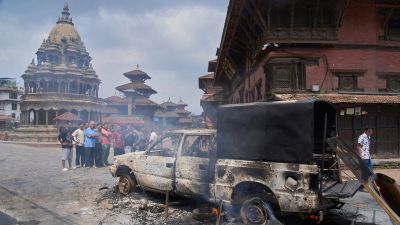Are you an athlete living in Delhi? Bad air can impair performance, affect heart and lungs, warn doctors
For the first time, the National Centre for Sports Science & Research (NCSSR) is set to conduct a study on the impact of pollution on sportspersons.
 Doctors say fine particulate matter penetrates deep into the lungs, causing inflammation, irritation, and reduced lung function. Over time, athletes may experience chronic issues such as asthma, bronchitis, or reduced pulmonary efficiency, which hinders endurance and stamina. (Representational Image: PTI)
Doctors say fine particulate matter penetrates deep into the lungs, causing inflammation, irritation, and reduced lung function. Over time, athletes may experience chronic issues such as asthma, bronchitis, or reduced pulmonary efficiency, which hinders endurance and stamina. (Representational Image: PTI)If you are an athlete living or practising in Delhi, the high levels of pollution in the city can have a severe impact on your performance and overall health. According to experts, athletes are especially vulnerable as their air intake is higher and they train and compete outdoors for large portions of the day. Heightened exposure, they say, can lead to immediate and long-term consequences.
To understand this, the National Centre for Sports Science & Research (NCSSR) is set to conduct a study on the impact of pollution on sportspersons. According to Dr (Brig) Bibhu Kalyan Nayak, Director and Head, NCSSR, this is the first time such a study will be conducted in India. “We have formed an ethics committee and will now start our work on the impact of pollution on sportspersons; we will be conducting multi-centric and interdisciplinary research,” he says.
Dr Nayak says following the severe smog after Diwali and AQI levels exceeding 400 in Delhi, several precautionary measures were taken — physical activities for athletes were shifted indoors and activities such as yoga and aerobics were conducted in well-ventilated halls.
He also says the impact of pollution on young children interested in sports is the worst and makes them more vulnerable: “Children’s lungs are still developing, and their higher metabolic rate during physical activity causes them to inhale more air — and thus pollutants — compared to adults. Pollution may impair physical growth and development, affecting their overall fitness and potential as athletes.”
According to Dr Nikhil Modi, Senior Consultant, Respiratory and Critical Care, Indraprastha Apollo Hospitals, athletes breathe more deeply and frequently during intense workouts, which increases their intake of pollutants such as particulate matter (PM 2.5 and PM 10), nitrogen dioxide (NO2), ozone (O3), and carbon monoxide (CO).
He says fine particulate matter penetrates deep into the lungs, causing inflammation, irritation, and reduced lung function. Over time, athletes may experience chronic issues such as asthma, bronchitis, or reduced pulmonary efficiency, which hinders endurance and stamina, he adds.
“Air pollution also impacts an athlete’s recovery process as it causes oxidative stress and systemic inflammation. This delays muscle repair and heightens fatigue, affecting the ability to train consistently and achieve peak performance,” he says.
Dr Modi adds that pollutants like CO and NO2 can impair oxygen delivery by binding to hemoglobin, reducing the oxygen available to muscles during exercise. This increases cardiovascular strain, forcing the heart to work harder and reducing overall performance. Long-term exposure to pollution also elevates the risk of cardiovascular diseases, including hypertension and arrhythmias, he says.
To be sure, there has been no research or study that has been conducted so far in India to study the impact of air pollution on athletes.
Interventions
According to Dr Nayak, the Sports Authority of India has been providing supplements to ensure adequate intake of Vitamins C and E to combat oxidative stress. “We did regular pulmonary and cardiovascular health checkups for athletes and children exposed to pollution and avoided high-intensity workouts that increased respiratory rates,” he says.
He also says awareness sessions were held for parents on air pollution risks, and air purifiers were installed in select schools to maintain air quality indoors. “While outdoor exposure was reduced, awareness campaigns led to long-term lifestyle adjustments such as monitoring AQI and using masks,” says Dr Nayak.
He also says indoor training centres have been established with high-efficiency air filtration systems. “We have developed ‘pollution-proof’ domes for team sports, ensuring controlled air quality. To further minimise exposure, outdoor activities were restricted and we implemented short, high-intensity training,” says Dr Nayak.







